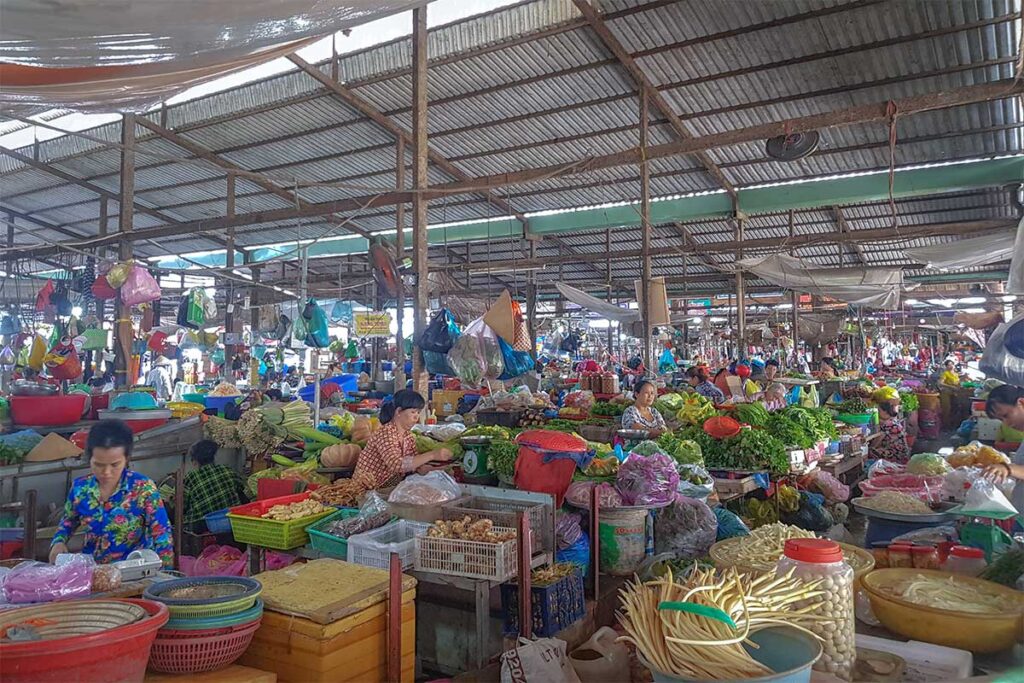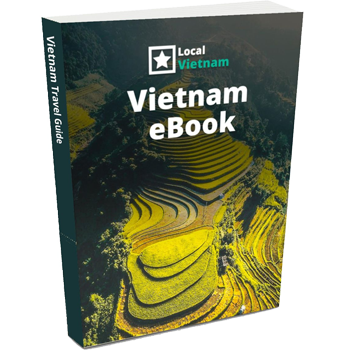Note: There is also a Tan An Market in Hoi An. If you were searching for that one, check out our dedicated Tan An Market Hoi An guide.
What is Tan An Market?
Tan An Market is the oldest wholesale market in Can Tho and has long been a central trading point in the Mekong Delta. With an area of over 3,700 square meters, it plays a vital role in supplying goods—especially agricultural produce, seafood, and rice—to smaller markets throughout the city and neighboring provinces. For locals, it is not just a place to shop, but part of the daily rhythm of life in Can Tho.
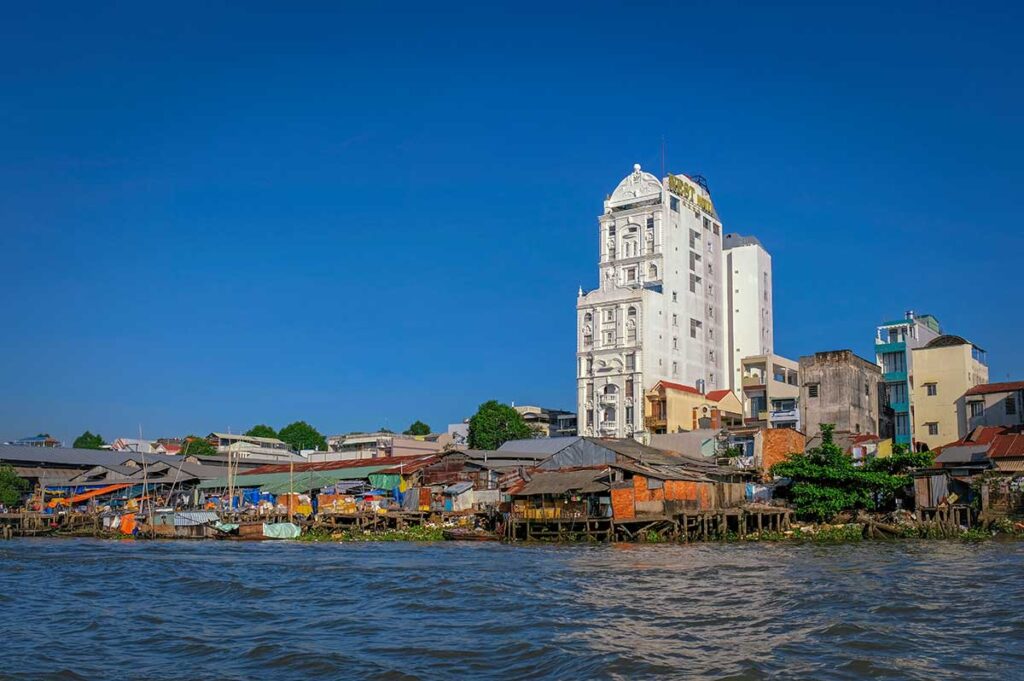
Historically, Can Tho developed as a riverside trading hub, where goods from across the fertile delta were gathered before being distributed further afield. Tan An Market grew alongside this prosperity, anchoring itself as the commercial heart of the city long before Can Tho became a travel destination.
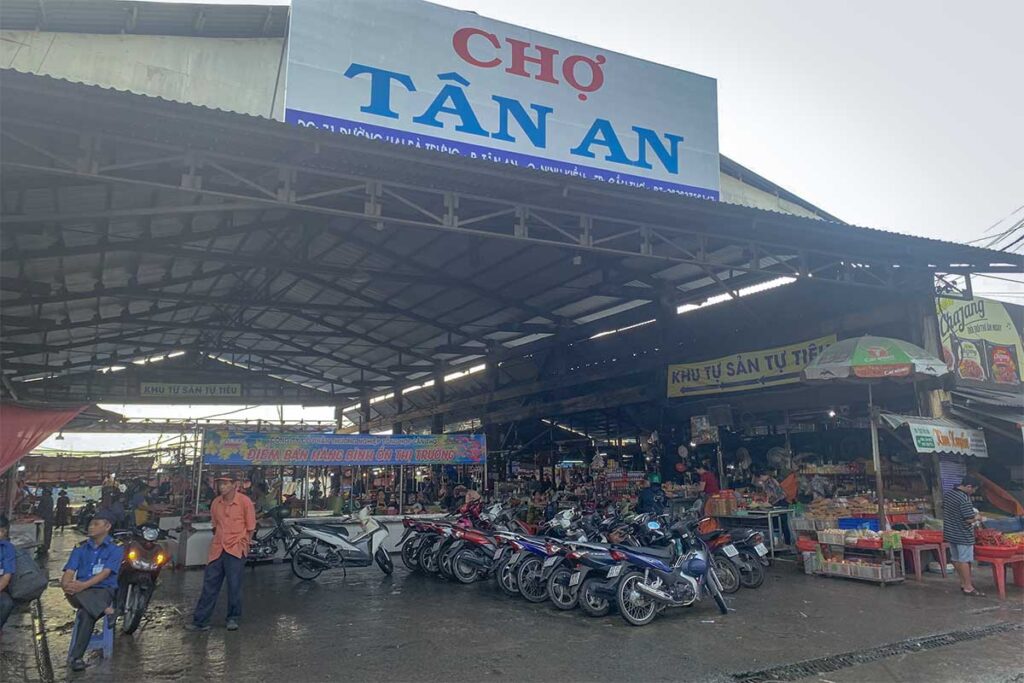
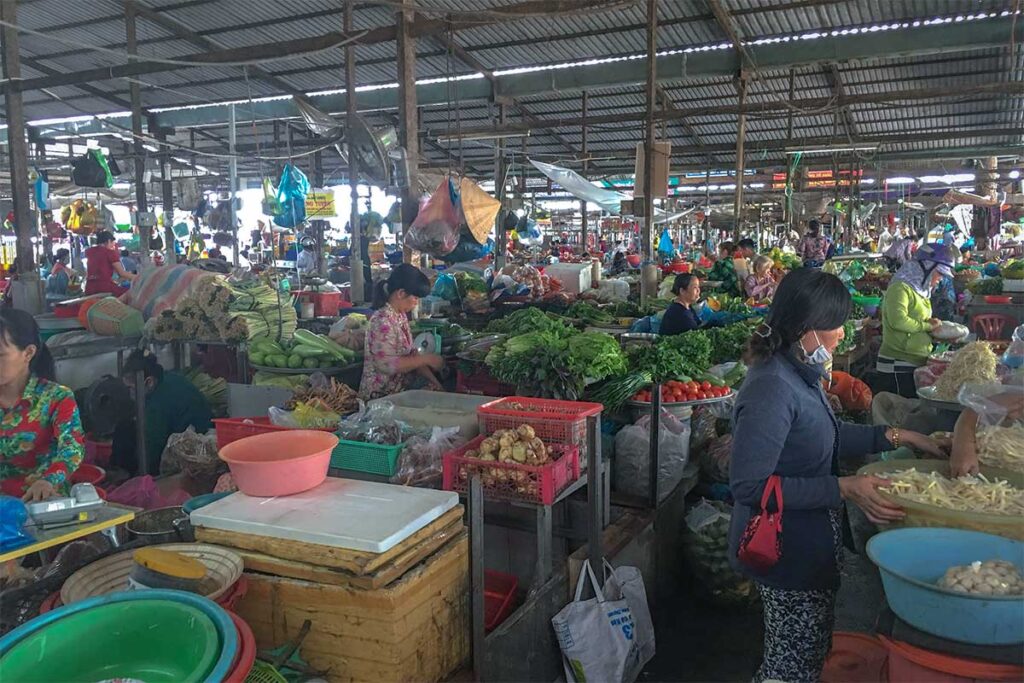
Today, its role is very different from that of the more famous Cai Rang Floating Market. While Cai Rang has shrunk in scale and shifted toward tourism, Tan An remains firmly focused on serving locals. It is loud, lively, and crowded, filled with the smells of fresh produce and the sound of bargaining. Unlike the floating markets, you won’t find staged photo opportunities or souvenir stalls here—just a raw slice of authentic Mekong Delta commerce.
Things to see at Tan An Market
A walk through Tan An Market gives you a vivid impression of local life in Can Tho. Here’s what you can expect to encounter:
1. Fresh produce & fruit stalls
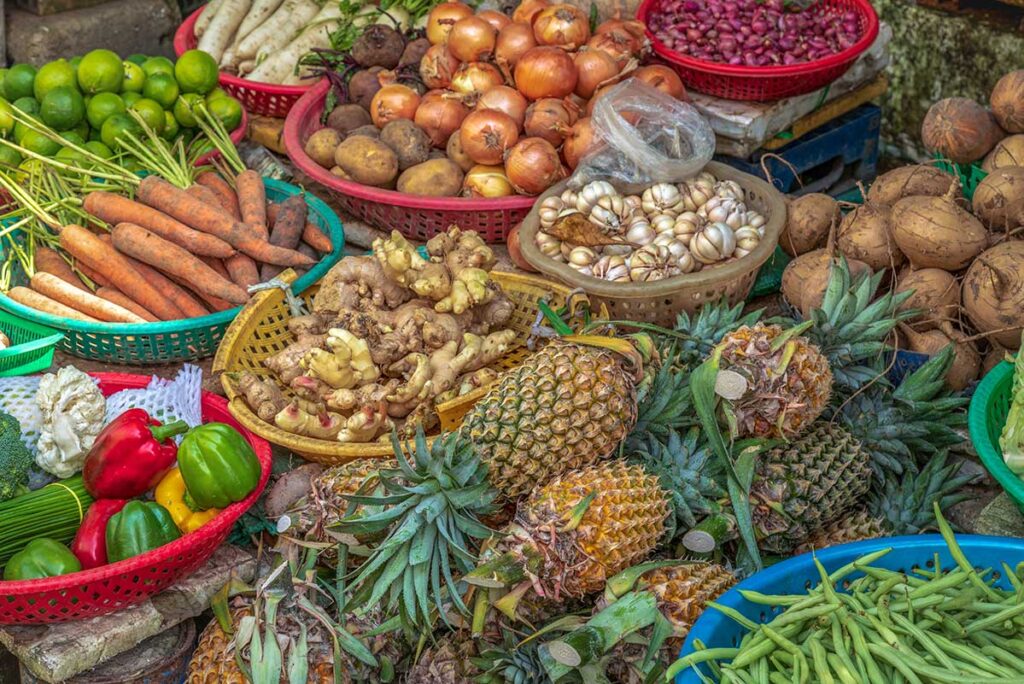
Piles of bananas, mangoes, coconuts, and seasonal Mekong specialties dominate the outer stalls. Vendors often stack their fruit into colorful displays, making this one of the most photogenic areas of the market.
2. Seafood & fish section
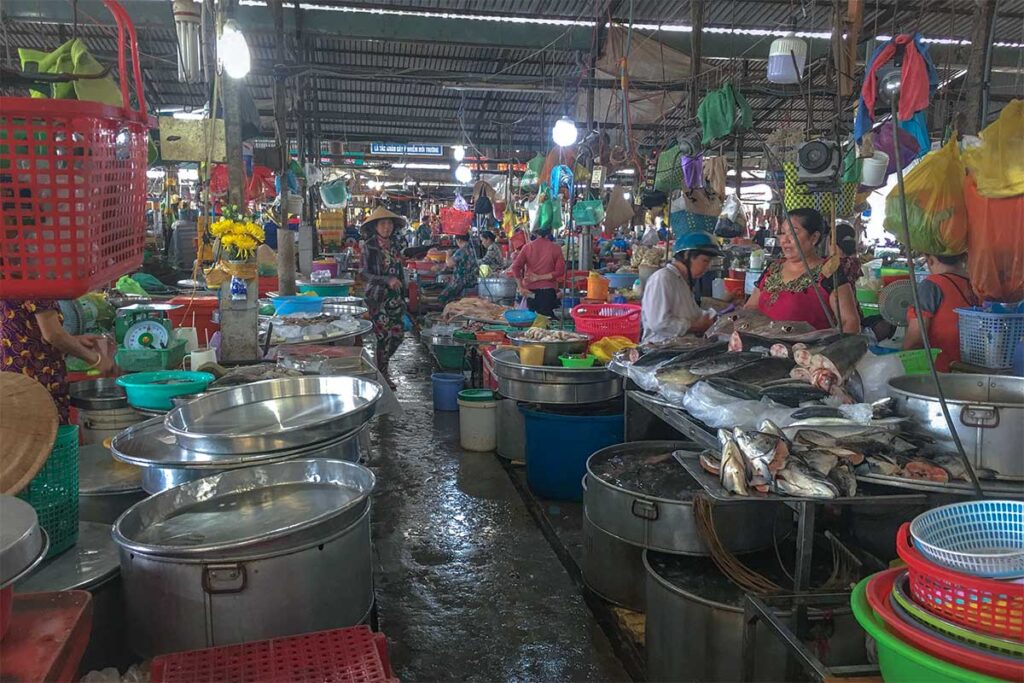
The fish section is the liveliest part of the market, with tubs of live fish, crabs, and prawns splashing about as sellers prepare orders on the spot. For travelers, it’s fascinating but can feel overwhelming due to the smell and noise.
3.Meat & poultry stalls

This is where you see raw cuts of pork, chicken, and duck displayed on open tables. It’s very much a local experience—interesting for some, but not suited to everyone.
4. Dry goods & daily essentials
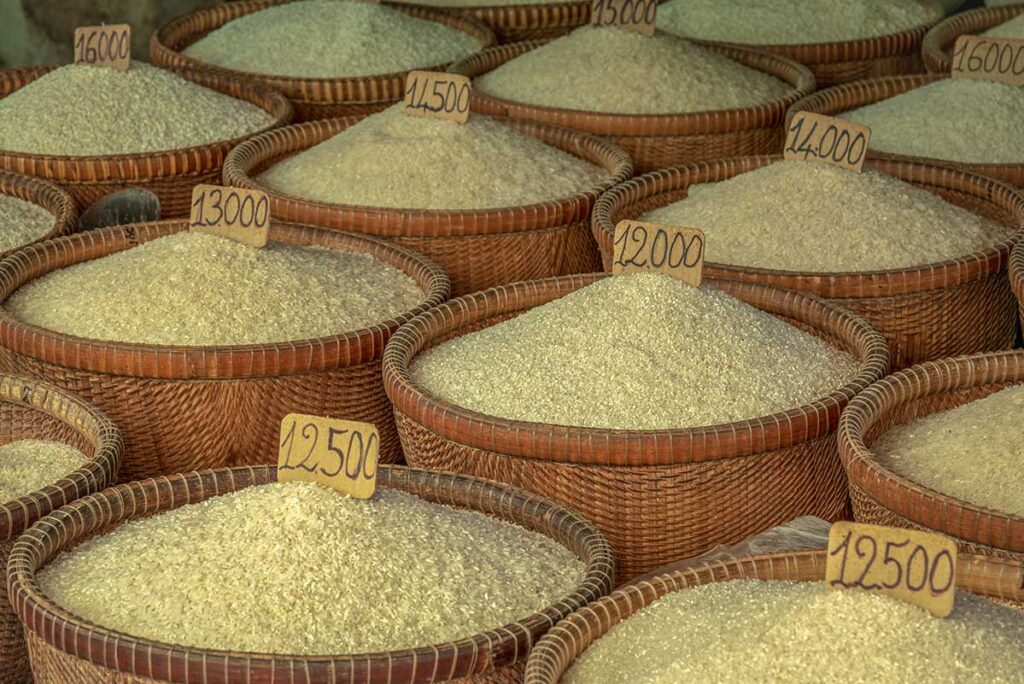
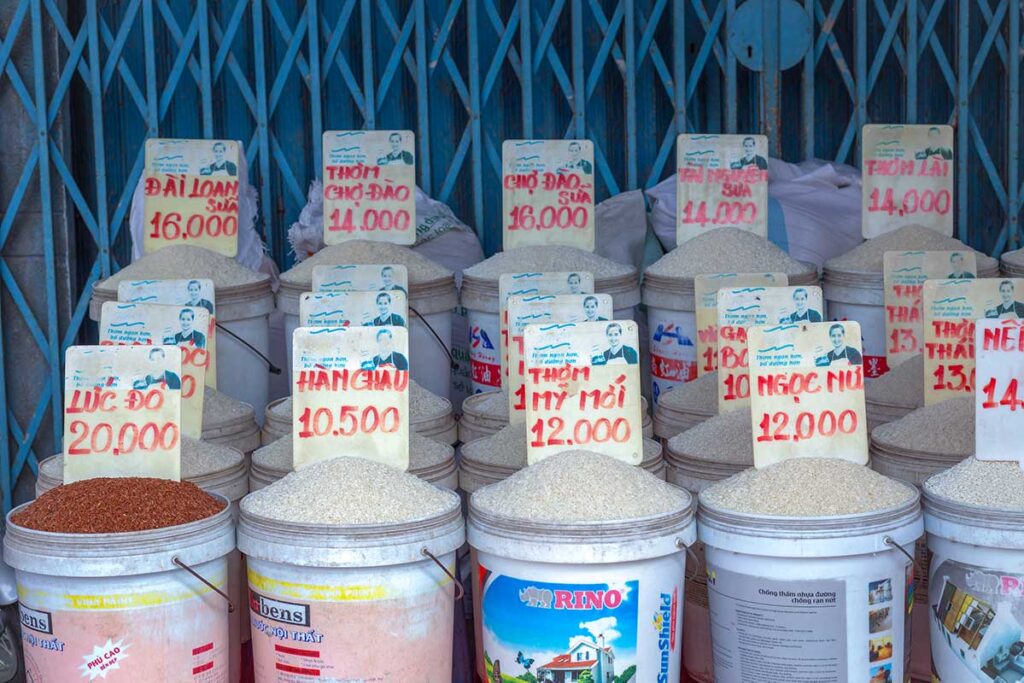
Beyond fresh food, you’ll also find sacks of rice, spices, noodles, and other staples of Mekong Delta cooking. These stalls show why Tan An is such an important wholesale supplier for the region.
5. Food stalls & cheap eats nearby
Just outside or at the edges of the market, small food stalls sell simple meals like noodle soup, banh mi, or sweet snacks. Prices are very low, and this is one of the best ways to experience daily dining in Can Tho.
Is Tan An Market worth visiting?
Tan An Market is best for travelers who want to experience an authentic, non-touristy side of Can Tho. It’s lively, chaotic, and full of local character, making it one of the few places in the city where you can truly observe everyday Mekong Delta commerce in action.
That said, it’s not a must-see for everyone. Similar wholesale markets exist in many cities across Vietnam, and if your time in Can Tho is limited, you may prefer to focus on highlights like a floating market visit or cultural sites near Ninh Kieu Wharf.
Where Tan An stands out is its unfiltered look at Mekong life—from fresh fish and fruit to mountains of rice, it reflects the agricultural heart of the delta more than any floating market can today.
In comparison:
- Cai Rang and Phong Dien Floating Markets have become smaller and more tourist-oriented over the years.
- Can Tho Central Market is worth visiting for its French colonial building and souvenir shopping, but it lacks the raw energy of wholesale trade.
Tan An Market, by contrast, is not shrinking or staging itself for visitors—it remains a thriving, noisy hub where locals do business. If you value authentic travel experiences, it’s well worth an hour of your time.
Other markets in Can Tho
If you have more time in the city, you can explore several other markets that each show a different side of Can Tho’s culture and commerce:
- Can Tho Central Market – A historic French colonial building along the riverfront, popular for souvenirs and local products.
- Cai Rang Floating Market – The most famous in the delta, though now smaller and geared toward tourism.
- Phong Dien Floating Market – Quieter and more traditional than Cai Rang, but much less active than in the past.
- Tay Do Night Market – A lively evening spot for street food, snacks, and a casual stroll.
- An Lac, An Binh & Cai Khe Markets – Everyday neighborhood markets that give a good sense of local life.
